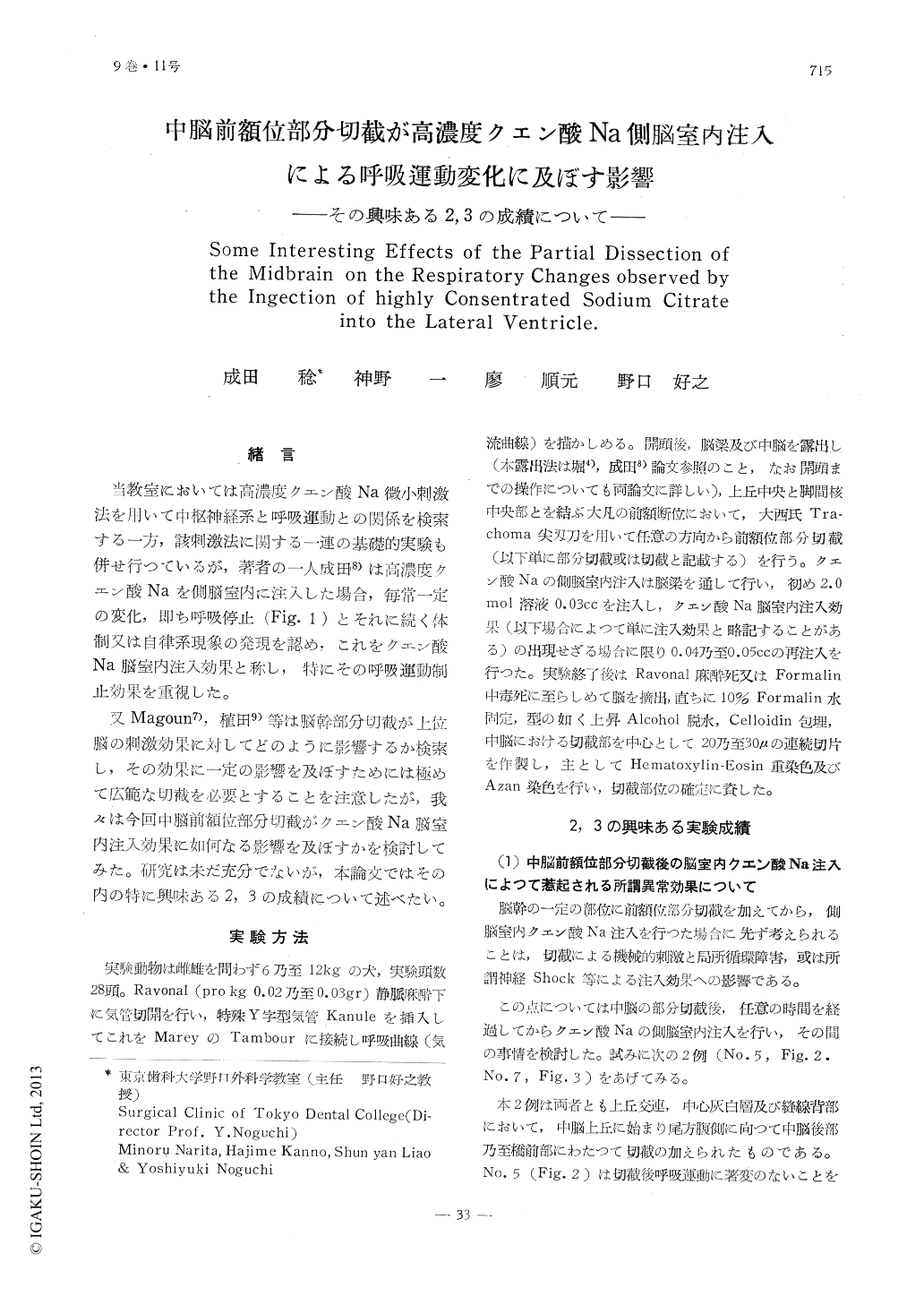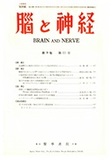Japanese
English
- 有料閲覧
- Abstract 文献概要
- 1ページ目 Look Inside
緒言
当教室においては高濃度クエン酸Na微小刺激法を用いて中枢神経系と呼吸運動との関係を検索する一方,該刺激法に関する一連の基礎的実験も併せ行っているが,著者の一人成田8)は高濃度クエン酸Naを側脳室内に注入した場合,毎常一定の変化,即ち呼吸停止(Fig.1)とそれに続く体制又は自律系現象の発現を認め,これをクエン酸Na脳室内注入効果と称し,特にその呼吸運動制止効果を重視した。
又Magoun7),植田9)等は脳幹部分切截が上位脳の刺激効果に対してどのように影響するか検索し,その効果に一定の影響を及ぼすためには極めて広範な切截を必要とすることを注意したが,我々は今回中脳前額位部分切截がクエン酸Na脳室内注入効果に如何なる影響を及ぼすかを検討してみた。研究は未だ充分でないが,本論文ではその内の特に興味ある2,3の成績について述べたい。
One of the authors, NARITA, reported that the injection of highly concentrated sodium citrate into the lateral ventricle, arrests respiratory movements and causes various autonomic responses, and named these changes as the "effects of sodium citrate injection into the lateral ventricle".
In the present study, 28 dogs received partial dissection of the midbrain for the investigation of effects of 2.0 mol sodium citrate 0.03cc injection into the lateral ventricle.
1) After partial dissection of the midbrain beyond a certain limit, the typical effects of sodium citrate injection (into the lateral ventricle) do not appear for about 20 minutes except slight inhibitory and acceleratory changes. Then, the respiratory arrest sud-denly becomes apparent‥‥‥.the typical effects of sodium citrate injection (into the lateral ventricle). This phenomenon may be con-sidered as a sort of nerve shock and is named "midbrain shock".
2) In order to eliminate above mentioned effects of sodium citrate injection into the lateral ventricle, frontal dissection of more than two thirds or three fourths of the midbrain is required.

Copyright © 1957, Igaku-Shoin Ltd. All rights reserved.


